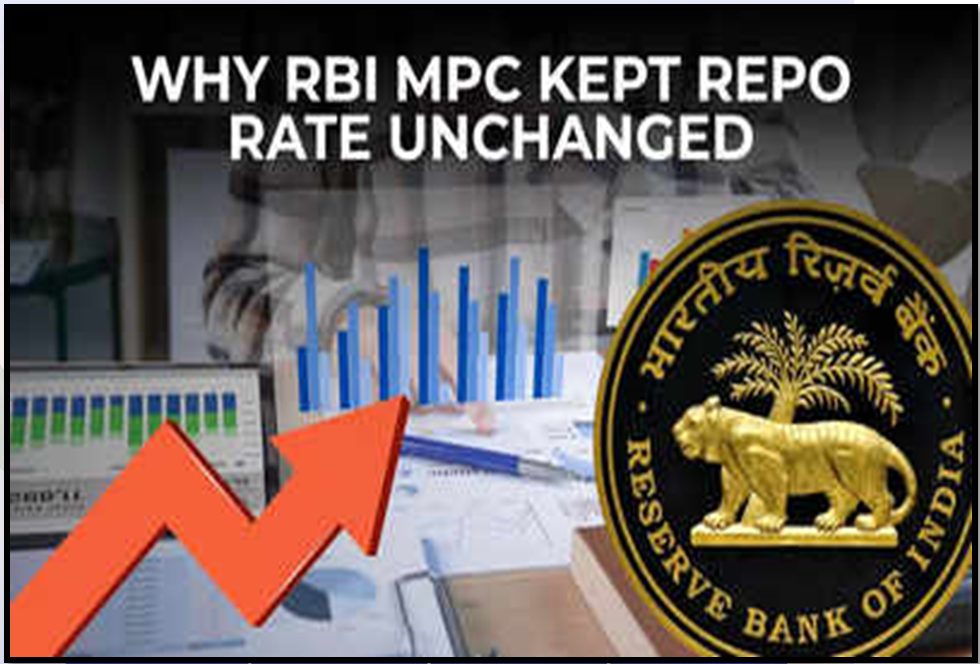RECALCITRANT JUMBO ANCHORING INFLATION WILL BE THE BASE FOR LONG-TERM GROWTH
SYLLABUS:
GS 3:
- Indian Economy and issues relating to planning, mobilization, of resources, growth, development and employment.
Focus:
- In the latest meeting, the Reserve Bank of India’s Monetary Policy Committee (MPC) maintained the repo rate at 6.50% for the eighth consecutive time, citing the persistent threat of food inflation as a key concern.
Source: TOI
Inflation is the general rise in prices of everyday goods and services, such as food, clothing, housing, and transportation, leading to a decrease in the purchasing power of a nation’s currency. It is commonly expressed as a percentage indicating how much the general level of prices has risen over a given period. Inflation can also be measured through the change in the Wholesale Price Index (WPI) from one year to the next.
Overview of Monetary Policy
- Definition: Monetary policy involves the strategies employed by a central bank to control the supply of money, primarily through its monetary instruments, to achieve specific goals.
- Primary Objective: The main goal of the Reserve Bank of India’s (RBI) monetary policy is to maintain price stability, which supports sustainable economic growth.
- Importance of Price Stability: Achieving price stability is considered a fundamental prerequisite for sustainable growth as it ensures economic predictability and stability.
- Inflation Targeting: As per the amended RBI Act, 1934, the Government of India, in consultation with the RBI, sets an inflation target of 4% with a tolerance band of +/- 2%, which is revised every five years.
- Balancing Growth: While focusing on price stability, the RBI also considers economic growth objectives within its policy framework.
Overview of the RBI’s MPC Decision
- Unchanged Repo Rate: The Reserve Bank of India’s Monetary Policy Committee (MPC) has left the benchmark repo rate unchanged at 6.50% for the eighth consecutive meeting.
- Persistent Food Inflation Concerns: The decision was influenced by concerns that high food inflation might disrupt efforts to maintain stable prices.
- Inflation Trends: Food inflation measured by the Consumer Food Price Index rose to 8.7% in April, up from 8.52% in March, with notable price increases in tomatoes, onions, and potatoes.
- Voting Outcome: The MPC voted by a 4-2 majority to continue focusing on withdrawing monetary accommodation to align inflation progressively with the target of 4%.
- Challenges Ahead: Increasing adverse climate events and supply shocks complicate the forecast for food price trajectories, adding to the uncertainty.
Overview of the Monetary Policy Committee (MPC)
|
External Factors Impacting Inflation
- Vulnerabilities from Climate and Supply Issues: Rising temperatures and low water storage levels in reservoirs heighten the risk of further food price increases.
- Industrial and Oil Price Concerns: Increases in industrial metal prices and uncertain crude oil prices, affected by tensions in West Asia and OPEC+ output cuts, pose additional threats to price stability.
- Consumer Expectations: Surveys in May showed households expect inflation to increase across all major product groups over the next three months to a year.
- Consumer Confidence: Confidence moderated from earlier in the year, with a significant majority expecting price gains to accelerate.
- Policy Focus: Governor Shaktikanta Das emphasized the importance of anchoring inflation expectations to lay a foundation for sustained long-term growth.
Importance of Anchoring Inflation
- Foundation for Growth: Stable inflation is deemed essential for sustained long-term economic growth.
- Inflation Expectations: The RBI aims to anchor public expectations around inflation to avoid reactionary economic behaviors that could lead to volatility.
- Strategic Policy Stance: The MPC’s decision reflects a strategic stance to manage inflation carefully despite multiple external pressures.
- Survey Insights: RBI surveys indicate a growing concern among households regarding inflation, influencing the MPC’s cautious approach.
- Economic Stability Goal: By focusing on price stability, the RBI aims to ensure economic stability and foster conditions conducive to growth.
The RBI’s steadfast focus on maintaining price stability through careful monitoring of inflation trends is essential for laying a strong foundation for India’s economic future. By prioritizing inflation control, the RBI aims not only to mitigate immediate economic challenges but also to ensure a stable environment for investment and growth in the long term. The ongoing commitment to this strategy is crucial for fostering confidence among consumers and investors alike.
Concepts Related to Inflation
|
Source:The Hindu
Mains Practice Question:
Evaluate the effectiveness of the RBI’s monetary policy tools in controlling inflation in the context of recent global economic uncertainties and domestic supply shocks. Discuss the implications of sustained inflation on India’s long-term economic growth and stability.
Associated Articles:




